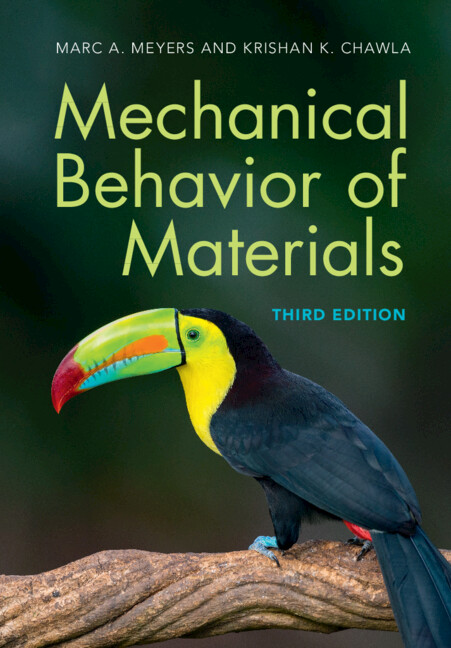Mechanical Behavior of Materials
Fully revised and updated, the new edition of this classic textbook places a stronger emphasis on real-world test data and trains students in practical materials applications; introduces new testing techniques such as micropillar compression and electron back scatted diffraction; and presents new coverage of biomaterials, electronic materials, and cellular materials alongside established coverage of metals, polymers, ceramics and composites. Retaining its distinctive emphasis on a balanced mechanics-materials approach, it presents fundamental mechanisms operating at micro- and nanometer scales across a wide range of materials, in a way that is mathematically simple and requires no extensive knowledge of materials, and demonstrates how these microstructures determine the mechanical properties of materials. Accompanied by online resources for instructors, and including over 40 new figures, over 100 worked examples, and over 740 exercises, including over 280 new exercises, this remains the ideal introduction for senior undergraduate and graduate students in materials science and engineering.
- Mathematically simple, with strong use of visuals, and requires no extensive prior knowledge of materials
- Each fully revised chapter is focused on a core mechanical principle, then applied to a broad range of classical and modern materials
- Includes new coverage of biomaterials and electronic materials, new testing techniques, and fresh examples and exercises for students to test their understanding
Reviews & endorsements
'The third edition of Mechanical Behavior of Materials by Marc A. Meyers and Krishan K. Chawla is a comprehensive and updated resource that provides a balanced approach to understanding the mechanical behavior of technologically important materials. It presents fundamental mechanisms at micro- and nanoscales with mathematical simplicity, making it accessible to senior undergraduate and graduate students in materials science and engineering. This edition introduces new content on biomaterials, electronic materials, and cellular materials, alongside established topics on metals, polymers, ceramics, and composites. It includes modern testing techniques, such as micropillar compression and electron back-scattered diffraction, and emphasizes practical applications with real-world data. This textbook is an essential guide for students and a valuable reference for practicing engineers and researchers.' Enrique J. Lavernia, Texas A&M University
'This revised and updated third edition makes a quantum leap in describing the fundamental deformation and fracture mechanisms of metals, ceramics, polymers, and composites, relevant to a wide range of structural applications and environments. The depth of topical coverage, including robust mechanics concepts, testing and characterization methods at various length scales, figures and illustrations with real data, and solved examples and exercises, are what distinguish this textbook from others, and make it most valuable for instructors and students.' Naresh Thadhani, Georgia Institute of Technology
Product details
May 2025Hardback
9781108837903
987 pages
254 × 178 × 51 mm
2.169kg
Available
Table of Contents
- Preface to the third edition
- Preface to the second edition
- A note to the reader
- 1. Materials: structure, properties, and performance
- 2. Elasticity and viscoelasticity
- 3. Plasticity
- 4. Imperfections: point and line defects
- 5. Imperfections: interfacial and volumetric defects
- 6. Geometry of deformation and work-hardening
- 7. Fracture: macroscopic aspects
- 8. Fracture: microscopic aspects
- 9. Fracture testing
- 10. Solid solution, precipitation, and dispersion strengthening
- 11. Martensitic transformation
- 12. Special materials: intermetallics and foams
- 13. Creep and superplasticity
- 14. Fatigue
- 15. Composite materials
- 16. Environmental effects
- Appendixes
- Index.









